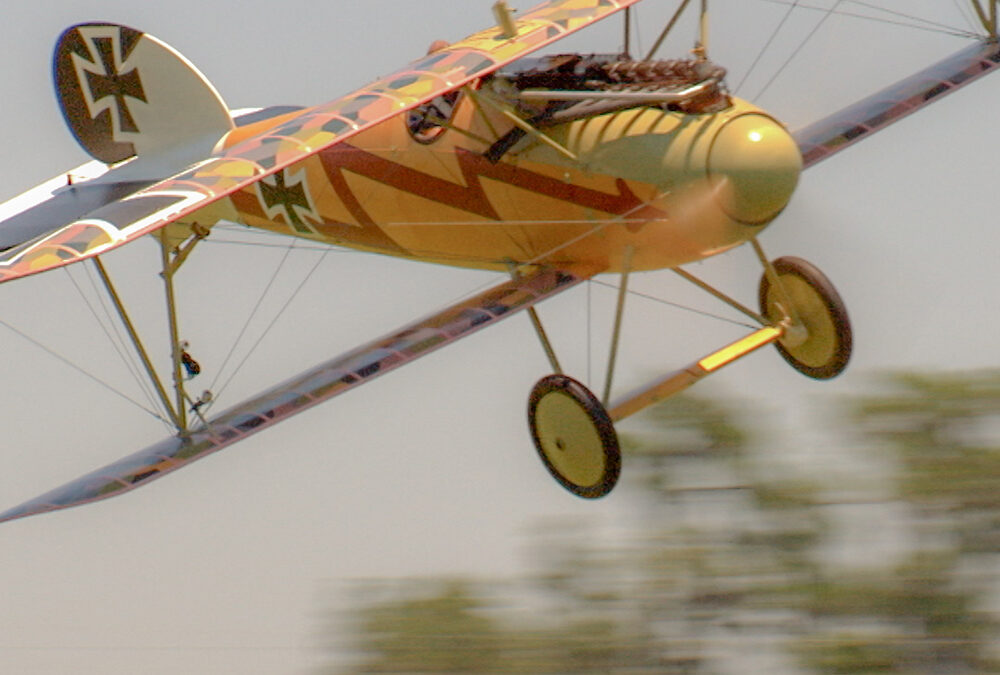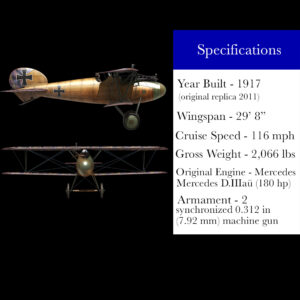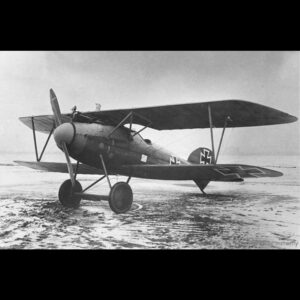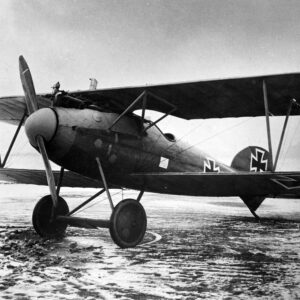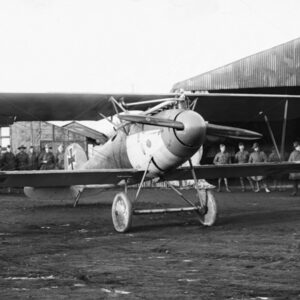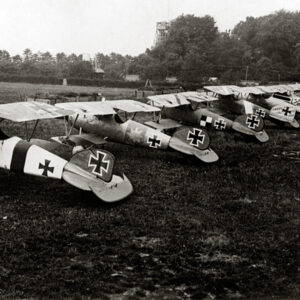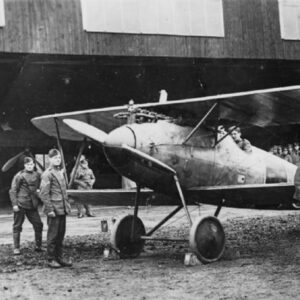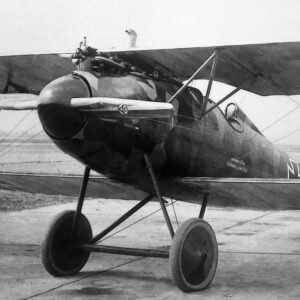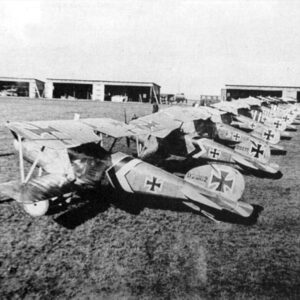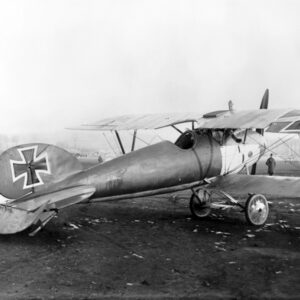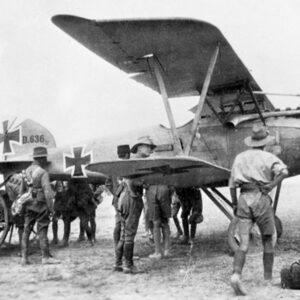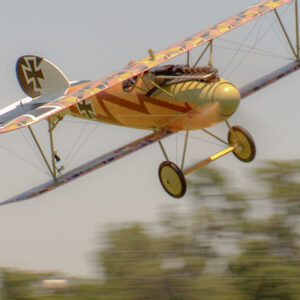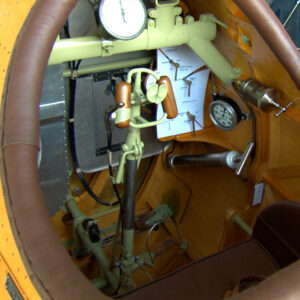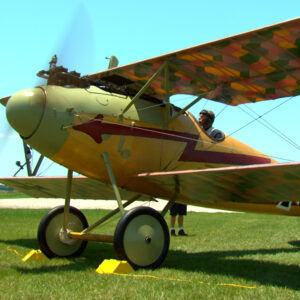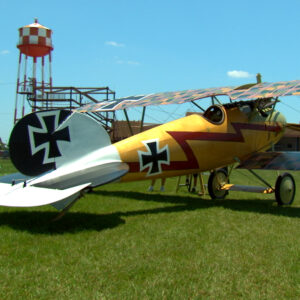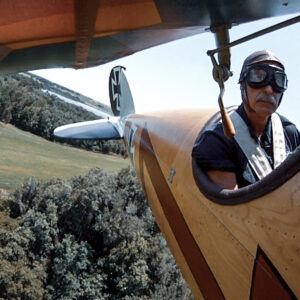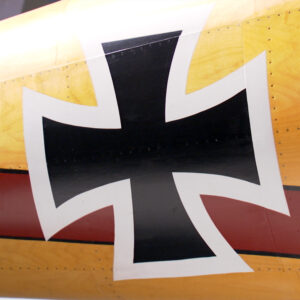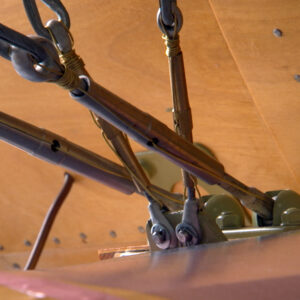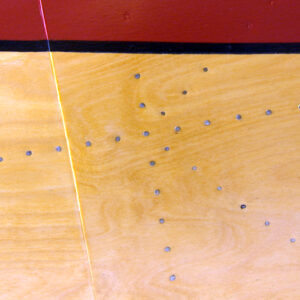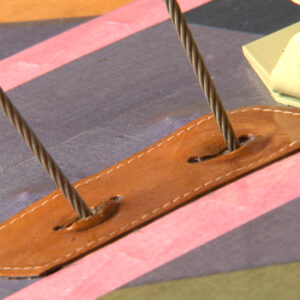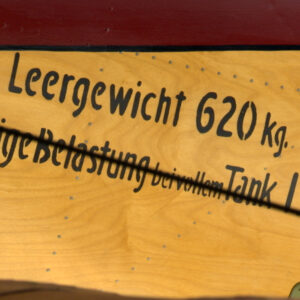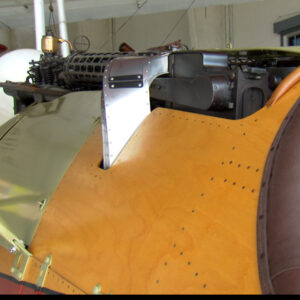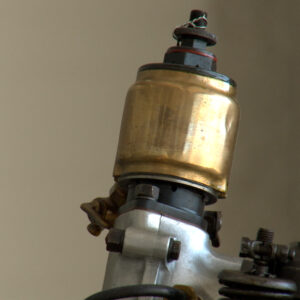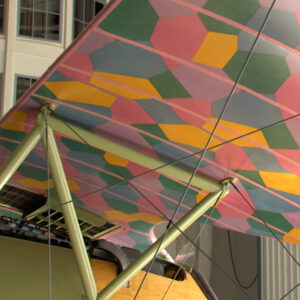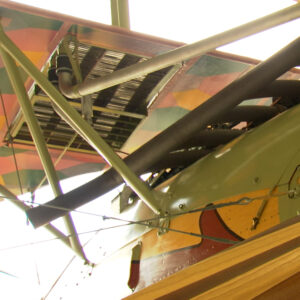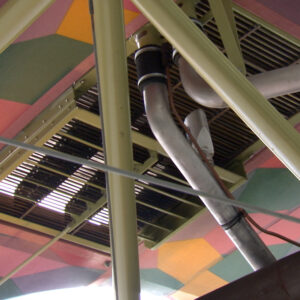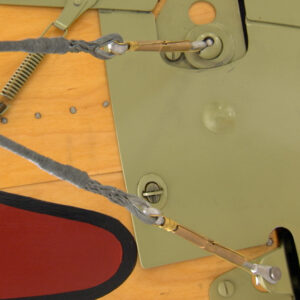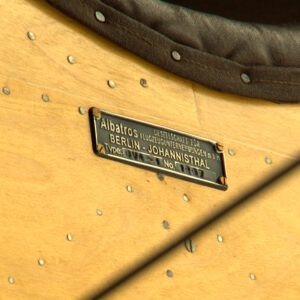Single-engine, single-seat, German World War I biplane fighter; 180-horsepower Mercedes D.IIIa water-cooled engine. Lozenge camouflage on wings. Natural wood finish on fuselage. Green and yellow stripes on tail. In 1916, Albatros Werke produced the remarkably advanced Albatros D.I. It featured a streamlined semi-monocoque fuselage, with an almost fully-enclosed 160-horsepower in-line Mercedes engine, and the propeller spinner neatly contoured into the nose of the fuselage. A sesquiplane version with narrow-chord lower wings, designated the D-III, was introduced early in 1917, and served with great success, despite the narrow lower wing being susceptible to frequent failure in prolonged dives. The Albatros D.V model was fitted with a more powerful 180-horsepower engine, but was plagued by a rash of upper-wing failures. The wings were strengthened, resulting in a re-designation, the D.Va. Unfortunately, the necessary strengthening increased the weight and negated the performance advantage of the new engine. The D.V and D.Va also continued to experience the same lower wing failure problems in a dive similar to the earlier D.III. A small auxiliary strut was added at the bottom of the outer wing struts to address the issue, but was not entirely successful.
Approximately 4,800 Albatros fighters of all types were built during World War I. They were used extensively by the German Air Service throughout 1917, and remained in action in considerable numbers until the end of the war. Many of the highest-scoring German aces achieved the majority of their victories while flying Albatros fighters.
The Albatros Werke began to build airplanes in 1910. Early in the war, the firm focused on two-seat observation types. In 1916, in response to the fading superiority of the Fokker monoplane to the French Nieuport 11 and the British de Havilland D.H.2, the German government requested the nation’s aircraft companies to produce a suitable replacement for the Fokker. Albatros Werke chief designer, Robert Thelen, with his assistants Gnaedig and Schubert, offered a remarkably advanced design, the Albatros D.I. It featured a streamlined semi-monocoque fuselage, with an almost fully-enclosed in-line Mercedes engine and the propeller spinner neatly contoured into the nose of the fuselage. The D.I was quickly modified into the very similar D.II, which had the upper wing repositioned slightly to improve visibility for the pilot. Both fighters entered front-line service in the fall of 1916 and immediately demonstrated strong advantages over their Allied counterparts. Powered by a 160-horsepower Mercedes engine and armed with two machine guns, the Albatros fighters used speed and firepower to overwhelm the lighter, more maneuverable Nieuports and D.H. 2s.
Even before the success of the Albatros D.I and D.II was fully realized, Thelen was already developing an improved model. The Albatros D.III was introduced early in 1917 and it met with instant acceptance by the German pilots. It was easy to fly and was an effective combat aircraft. The principal design change was the use of a narrow-chord lower wing, similar to the sesquiplane wing arrangement of the agile Nieuport fighters. This increased maneuverability as well as improving the pilot’s field of view. Initially, the narrow lower wing was susceptible to frequent failure in prolonged dives, but with reinforcement of the structure and improved workmanship, the problem was ameliorated. The Albatros D.III served with great success throughout the first half of 1917.

